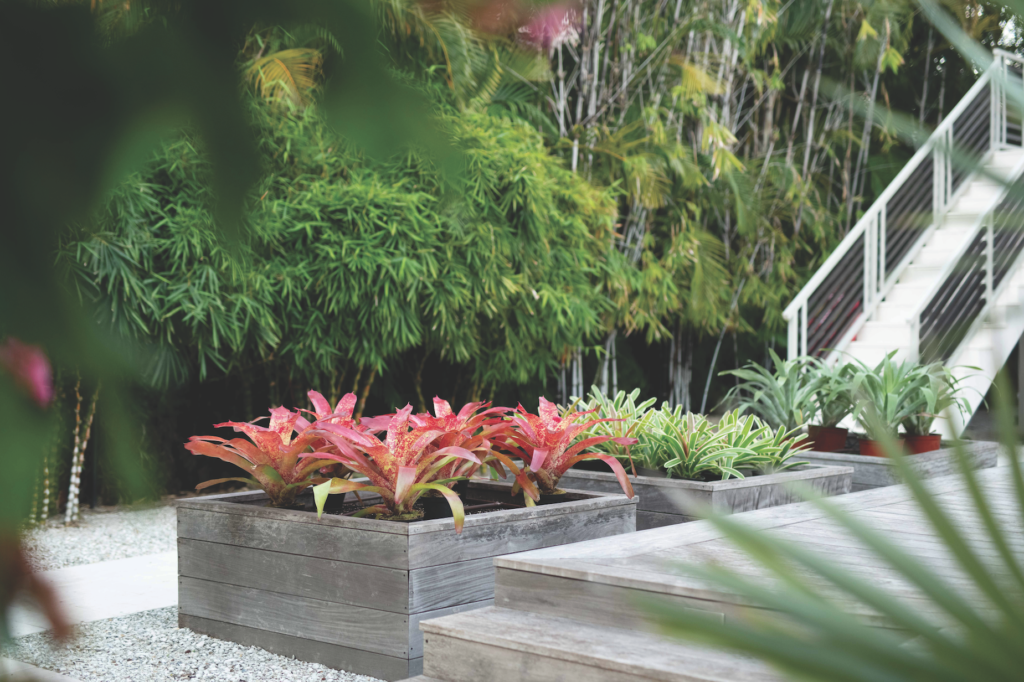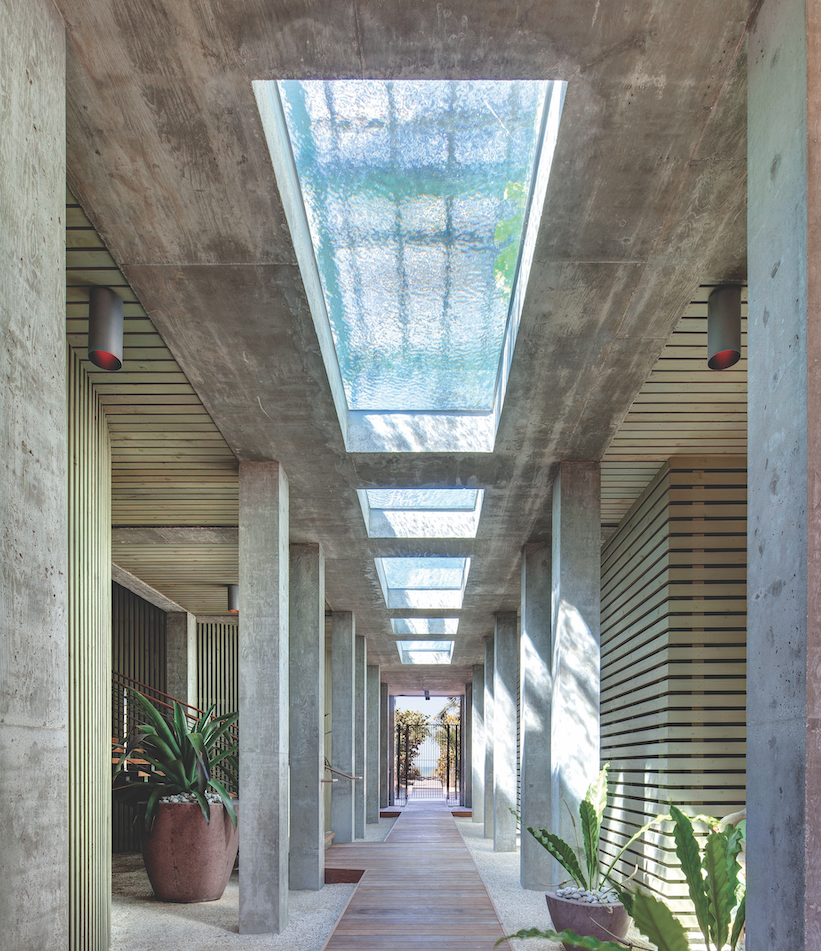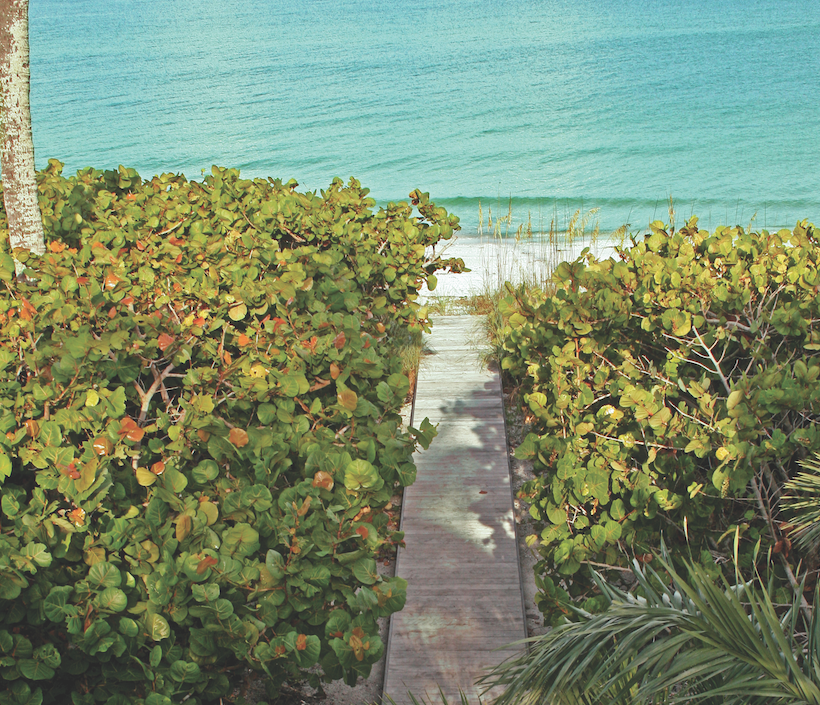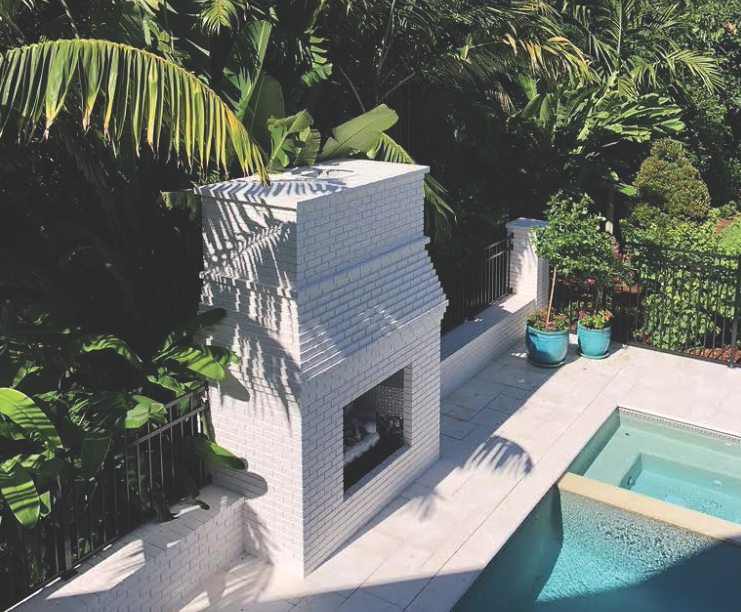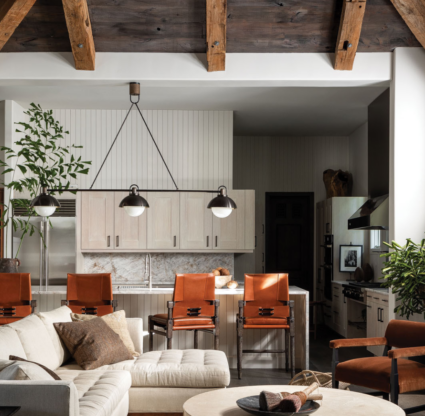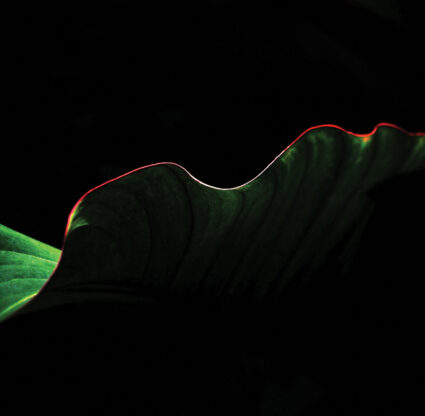From spectacular hedging to mind-blowing swimming pools, Southwest Florida’s landscape game is strong. But to keep it that way, the people who lie awake at night contemplating areca palms and irrigation methods are always thinking ahead.
After all, it takes more than some sod and the occasional croton to cut it today. These days, landscape designers constantly juggle the need to keep clients, climates and coastlines happy and healthy, while also delivering gorgeous settings for all of us to envy.
It’s challenging work when you consider the need to balance customer demands, governmental regulations and an ever-changing climate, while also making sure the plants not only survive, but thrive. “In the past there was more of ‘let’s dress up the property with plants,’” Ellin Goetz of Goetz+Strophes Landscape Architects says. She adds that now she often has clients who ask for a sequence of spaces in their yard that have different characteristics: a fire pit or outdoor kitchen or a water feature. Those clients are also considering which materials to use on the ground that will best allow for those additions—artificial turf or permeable pavers, for example. “So many different options are being used in yards now, and that’s good,” Goetz says.
What has also influenced the trend is the magic of the internet. People see an idea at their fingertips and that churns a lot of creativity. “We used to tell people if they see something they like in a magazine, tear the page out and we’ll talk about it,” Goetz says. “Now they are clicking on stuff and getting ideas and saying, ‘How can we make something like this for us?’ But doing things outdoors can be a little bit more intimidating than buying furniture for the house. There are a lot of aspects to the outside that are different.”
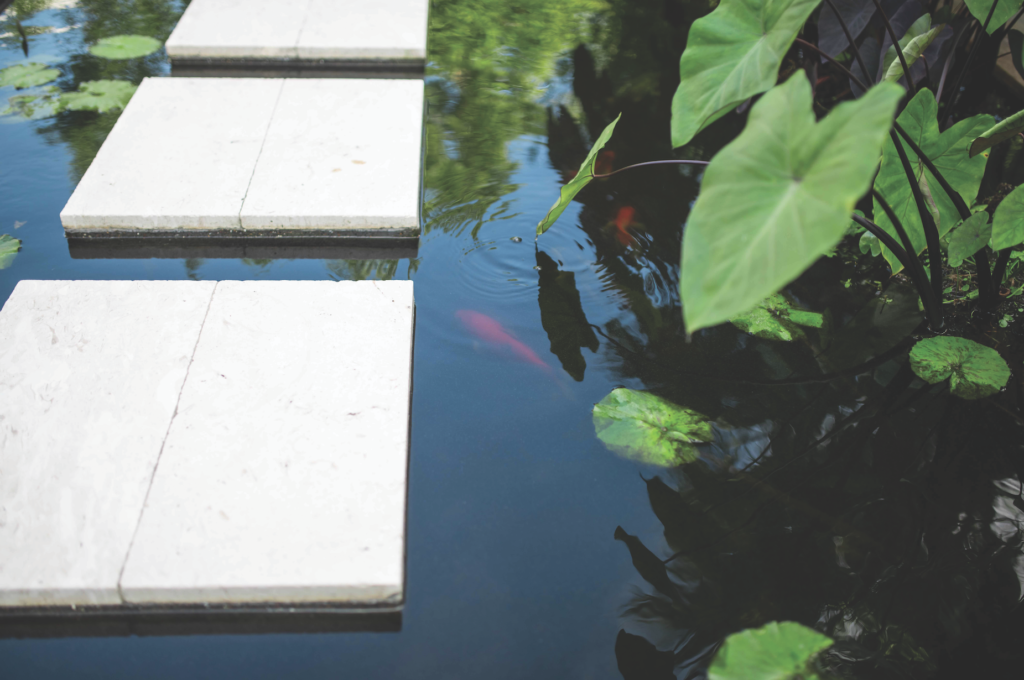
From spectacular hedging to mind-blowing swimming pools, Southwest Florida’s landscape game is strong. But to keep it that way, the people who lie awake at night contemplating areca palms and irrigation methods are always thinking ahead.
After all, it takes more than some sod and the occasional croton to cut it today. These days, landscape designers constantly juggle the need to keep clients, climates and coastlines happy and healthy, while also delivering gorgeous settings for all of us to envy.
It’s challenging work when you consider the need to balance customer demands, governmental regulations and an ever-changing climate, while also making sure the plants not only survive, but thrive. “In the past there was more of ‘let’s dress up the property with plants,’” Ellin Goetz of Goetz+Strophes Landscape Architects says. She adds that now she often has clients who ask for a sequence of spaces in their yard that have different characteristics: a fire pit or outdoor kitchen or a water feature. Those clients are also considering which materials to use on the ground that will best allow for those additions—artificial turf or permeable pavers, for example. “So many different options are being used in yards now, and that’s good,” Goetz says.

What has also influenced the trend is the magic of the internet. People see an idea at their fingertips and that churns a lot of creativity. “We used to tell people if they see something they like in a magazine, tear the page out and we’ll talk about it,” Goetz says. “Now they are clicking on stuff and getting ideas and saying, ‘How can we make something like this for us?’ But doing things outdoors can be a little bit more intimidating than buying furniture for the house. There are a lot of aspects to the outside that are different.”
One of the easiest to comprehend is that couches and dining room sets don’t wither and die. Another is that you need to worry about where all the runoff water is going.
David W. Young, of DWY Landscape Architects, found a brilliant and visually stunning way to tackle that concern with a project he designed on Little Gasparilla Island. At the main entry—where the motor court and driveway are—he used a regionally-quarried callida limestone set in a linear pattern, with six-inch strips of zoysia grass threading in between. The salt-tolerant and quick-recovering species of zoysia grass allows rainwater to percolate and remain on-site, rather than overburdening the municipal storm system. Under the motor court, is a cistern made up of multiple 20-inch diameter pipes capable of collecting 6,000 gallons of rainwater, which supplies the irrigation system, including the drip line that is inserted in the grass strips of the motor court, cutting back on the need for sprinklers. It’s a stylish way to avoid solid hardscape that creates large-scale runoff.

As for the greenery used, not only is there the struggle to keep plants alive under normal circumstances, climate change and overdevelopment has added a few new wrinkles to the mix. Luckily, there is a big push from homeowners toward low-maintenance landscaping. That not only means in terms of the initial labor, but also for upkeep, fertilizing and irritation, Mariah Bakke, the landscape architect behind Viva Landscapes, says. Planting native species usually means lower irrigation and fertilizer needs, which is a benefit here, considering the area’s concerns with water quality issues, she explains.
There’s also runoff—a particular concern for Bakke since many of the properties she works on are near the Gulf, bay or Caloosahatchee. In these cases, fertilizer becomes a key concern. “That goes back to the native solution,” she adds. “Native plants have less needs.”
Bakke says that “going native” doesn’t mean sacrificing aesthetics. Sanibel Island has some of the strictest regulations when it comes to landscaping and building. All properties on Sanibel have to store their own water, and irrigation water can’t run off onto neighboring properties or into bodies of water. Also on Sanibel, landscaping has to be made up of 75% native plants, she adds. “You have to get creative, but it is possible to have a beautiful landscape with natives,” she explains. “If you think of it strategically, or with a designer’s eye, you can create a really pretty project that is mostly native.”

That’s why Sanibel looks different than any other area in Southwest Florida, with its lush, wild landscapes. But, regardless of the ecological and regulatory reasons to plant natives, there are still plenty of people looking to dazzle guests with unique species and layouts. “People want their gardens to not only be an extension of their homes, but of themselves,” landscape architect Leigh Gevelinger of Coastal Vista Design says.
Her company has clients who are well-traveled and want to bring ideas from abroad and incorporate them into their gardens, she adds. Although she has to often guide her clients through the specifics of what would work best in a particular project, she gets many requests for unusual varieties of flora, such as Cuban paddle palm or lipstick palms; hard-to-source plant materials; and uncommon garden options. “They want things their friends don’t have. It has become more like interior design than ever before,” Gevelinger explains. “Pools and hardscape are now an extension of the house.”
Naples-based landscape architect W. Christian Busk says his clients want the gardens of Versailles on lots the size of postage stamps, but he makes it work. “What people want today is fire and water,” says Busk. When clients get out of their pools, they enjoy the warmth of a fire pit, he notes. And while they are in that pool, they want the experience to be special, which might call for a waterfall, fountain or zero-edge pool. Throughout their yards, clients are calling for more flowers and more fragrance, he adds. More and more, the entire exterior of the house becomes the landscape architect’s palette. “We are creating outdoor paintings, microcosms, putting the materials in their best light,” Busk says. From outdoor “rooms” created by hedging to sunken conversation pits built within swimming pools, we want our yards to be an experience that our friends and families can enjoy.
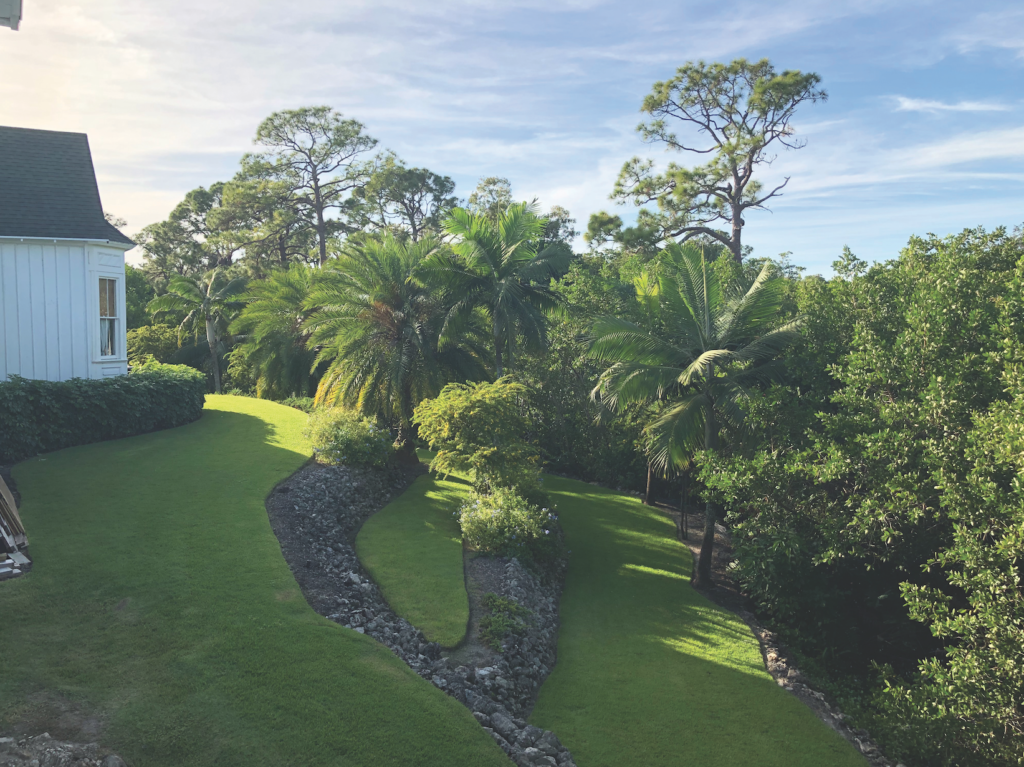
Bob Walsh, owner and senior designer of R.S. Walsh Landscaping, which maintains more than 150 estate homes across Southwest Florida, thinks what we are seeing is a reaction, in part, to the pandemic. “People want to create their own sanctuary, a place where they could entertain another couple, or their family,” he says. “That is the way things were heading anyway, but this sped it up.”
Walsh says things such as outdoor kitchens, fire pits, pergolas and water features are all on the wish lists, but that more subtle trends are also taking shape, such as lighting options that illuminate backgrounds. “It’s all LED in brass or copper (for longevity). And it’s not ‘shining up the palm tree,’ it’s a lot more sophisticated lighting design now.” Homeowners also want to be able to control everything from the irrigation to the lighting from their cell phones. There are even pergolas now that adjust their louvers automatically to keep you out of the sun or rain.
Walsh adds that clients are also choosing a variety of hardscape now, such as opting for large natural stone slabs encased in grass rather than pavers. But where people are still choosing pavers, technology has added the option of permeability, so that water runoff is better controlled.
And as the climate continues to change, things such as water retention, native plantings and salt tolerance (due to higher tides) might become necessities rather than eco-luxuries.

Dr. Gail Hansen, a faculty member of the University of Florida’s Environmental Horticulture Department, helps developers and municipalities chart a path to sustainability and environmental protection. Though she looks at the future from a big-picture perspective, she recognizes that change happens in each and every one of our backyards. “We need to be more bio-diverse,” Hansen says. “If you consider the bird landscape, we have an alarming drop in the number of birds. And the same with insects. And this plays into the idea of more native plants.” But she also understands that the aesthetics play a role. She points to the development of more drought- and shade-tolerant and slow-growing grasses (which means less mowing and maintenance). “We want to be careful from the aesthetics side, because it can look very much like the landscapes we have today,” Hansen says. “Drought-tolerant does not look like a desert.”
Technology has even added the option of artificial turf, which has greatly improved over the last few years, allowing water to drain directly through it and also allowing for air circulation. “Natural is better,” Hansen adds. “But in small areas, it’s OK.”
Perhaps the most useful trend right now is the concept of edible landscapes. Florida has always been known for its citrus and vegetable growing prowess, but interest in sustainability has brought it down to scale for a lot of homeowners. “Lemon trees, avocado, fig, pomegranate—whenever I say anything like that to a client, I get an automatic ‘Yes!’” Bakke says. As a result, she tries to put in as many fruit trees as possible—perhaps an herb garden, or at least a pot of herbs, or raised vegetable planters for seasonal clients.
And as hardiness zones continue to edge ever northward, opportunities to create a more tropical yard will continue—as will our interest in taking advantage of our outdoor spaces.



